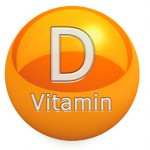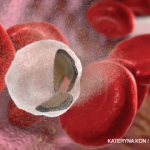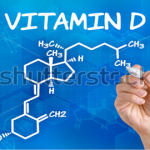Because vitamin D is produced in the skin from sunlight exposure, insufficient sun exposure can lead to vitamin D deficiency. As an example, absorption of UVB radiation by an SPF-15 sunscreen reduces vitamin D synthesis by approximately 99%. Five to ten minutes of direct exposure to sunlight on the arms and legs (depending on the season, latitude, time of day, and skin sensitivity) provides approximately 3,000 international units (IUs) of vitamin D3. Other causes of vitamin deficiency in adults include nutrient malabsorption issues or the use of certain medications. 5 In the elderly, production of vitamin D decreases, as do vitamin D stores. At age 70, there is an approximate 75% reduction in the synthesis of vitamin D. Only 10–15% of dietary calcium and about 60% of calcium is absorbed without vitamin D.
Hospitalized patients (approximately 57% in one study), nursing home patients (approximately 60% in one study), women treated for osteoporosis, patients with chronic renal disease, healthy adults in the winter, those with gastrointestinal disorders (e.g., celiac disease, cystic fibrosis, Crohn’s disease), patients that have undergone gastric bypass procedures, patients with musculoskeletal pain (a common symptom of vitamin D deficiency), and those with extensive burns are all at risk for developing vitamin D deficiency. In addition, low circulating levels of 25(OH)D are connected to increased parathyroid levels (secondary hyperparathyroidism), which increases mobilization of calcium from bone, leading to decreased bone mineralization. Other medication-induced causes of vitamin D deficiency include use of phenytoin, phenobarbital, and rifampin, which all induce hepatic cytochrome P450 enzymes accelerating the breakdown of vitamin D. Anti-rejection drugs like cyclosporine and highly active antiretroviral treatments can also cause vitamin D deficiency.
New Approvals
A combination of morphine sulfate and naltrexone hydrochloride in extended-release capsules (Embeda) was approved by the FDA. This long-acting opioid formulation is indicated for managing around-the-clock, moderate-to-severe pain and is the first drug–product combination to be approved with a “built in” abuse deterrent. This product is intended to reduce drug liking and euphoria when it is crushed or chewed.10
Tacrolimus (Prograf) has become available as a generic. Sandoz is marketing their product after winning a patent case against Astellas.11
Most agree that a serum 25-hydroxyvitamin D level (25[OH]D, or a calcidiol 25-hydroxycholecalciferol test) of less than 20 ng/mL (50 nmol) is considered deficient.3 In addition, a level of 21–29 ng/mL (52–72 nmol per liter) indicates relative insufficiency and a level of 30 ng/mL (75 nmol) or more is a sufficient level. A 25(OH)D level greater than 150 ng/mL (374 nmol per liter) is considered to be a toxic level. Using this definition, it has been estimated that approximately one billion people worldwide have vitamin D deficiency or insufficiency.
Treatment and Prevention
Vitamin D is available as a food and dietary supplement, or it can be found in multivitamins. In order to treat Vitamin D deficiency, the National Osteoporosis Foundation (NOF) recommends an intake of at least 800 to 1,000 IUs of vitamin D per day for adults at least 50 years of age. Patients with a 25(OH)D level less than 30 ng/mL should be treated to keep the level above 30 ng/mL. To maintain the safe upper limit of 25(OH)D above 30 ng/mL, adults may require daily supplementation of up to 2,000 IUs of vitamin D. This can be obtained with dietary supplements (e.g., vitamins) and food. The amount of vitamin D found in most multivitamins is 400 IUs. The Institute of Medicine as defined a “tolerable upper intake level” for vitamin D as 50 micrograms (2,000 IUs) daily for healthy adults and children older than one year.


